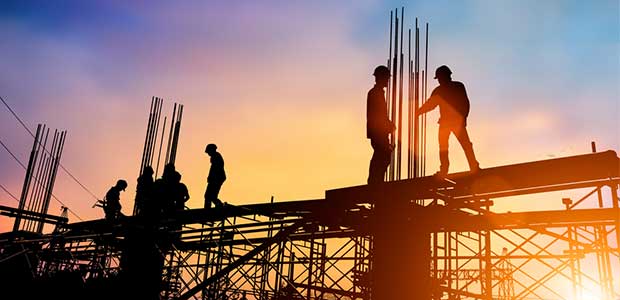
Boundary Monitoring: Reduce Disturbance, Improve Environmental Risks
Monitoring for noise, dust, vibration and harmful emissions makes it possible to manage the impact of the construction site.
- By Justin Stewart
- Jul 18, 2019
Boundary monitoring is an important factor in construction site control in order to minimize potential contamination, protect the public from site hazards and adhere to the appropriate public health requirements. Construction dust can compromise air quality; environmental noise pollution can be harmful to workers and local residents; and vibration can cause damage and a general nuisance to nearby property.
Monitoring for noise, dust, vibration and harmful emissions makes it possible to manage the impact of the construction site. Site management has a duty of care to protect against potentially dangerous conditions; however, this can be difficult to manage without reliable data streams and instrumentation that gathers the environmental information. Consequently, more and more companies are turning to boundary monitoring technology to measure the level of risk and make sure they adhere to environmental limits and guidelines.
Stay Informed about Site Emissions
Boundary monitoring refers to measurement of noise, dust, vibration and for short-term detection of harmful contaminants in the soil around a worksite to ensure that construction companies are complying with all applicable limits at work. Boundary monitoring systems are typically used for construction and demolition projects, environmental remediation sites, mining and quarrying, waste transfer, heavy road traffic and other places where compliance-related monitoring is required.
Real-time air quality monitoring systems are a cost-effective alternative to having on-site experts conduct manual monitoring. These solutions require little upkeep or maintenance while continually measuring conditions on or around a worksite and are designed for easy setup and use.
Control, Compliance, Reputation
Perimeter air monitoring and noise measurement are important components of a construction worksite, helping companies to remain compliant with control measures required for them to carry out the project. Ultimately, boundary monitoring could help protect the reputation and revenues of construction companies and other industrial firms. If complaints arise, responsible companies using boundary monitoring have proof points to show they have been diligent with their monitoring of operations and are abiding by operational requirements. Data evidence from a boundary monitoring system is also helpful if a worksite is blamed for issues caused by another operation, allowing site managers to respond rapidly, minimizing reputational damage. Email and text alerts can also be set up to alert when noise, dust or vibration levels are above prescribed levels, allowing preventive action to be taken before complaints arise. This allows construction sites to help maintain good relationships with their neighbors.
Environmental Risks and Health Implications
There are thousands of contaminated sites in the United States, varying in size and significance, ranging from abandoned buildings to large areas of land saturated with toxic materials from past industrial or mining activity.
Some sites are of great concern because of the chemicals present in the soil and also the locality of the land, exposing humans or the environment to hazards. These sites must be carefully managed through containment or cleanup and can prove to be a challenging undertaking. When under redevelopment, these sits pose a major hazard for new construction operations; however, effective boundary monitoring solutions can help to mitigate environmental issues during construction by effectively measuring toxic compound exposure.
An environmental monitor should be used for the short-term detection of emissions from site-related chemicals. The early detection of these emissions will help site management in mitigating and reducing the emissions exposure to surrounding communities in accordance with regulatory and guideline limits.
An effective monitoring solution is fixed with a photoionization detector (PID) that measures for Volatile Organic Compounds (VOCs) up to 6,000 ppm (parts per million), assessing the emissions limits and air quality of an area. VOCs are organic chemicals known for harmful properties that leak into the ground leaving the topsoil of the land polluted by the site’s previous occupants. The levels need to be assessed and continually monitored to ensure the site is safe for operation and to safeguard the health of the workforce and surrounding area. Not only is exposure to VOCs harmful to the environment, but these emissions can lead to lasting health implications, therefore VOC monitoring is often required.
About the Author
Justin Stewart is an Area Sales Manager at Casella U.S.